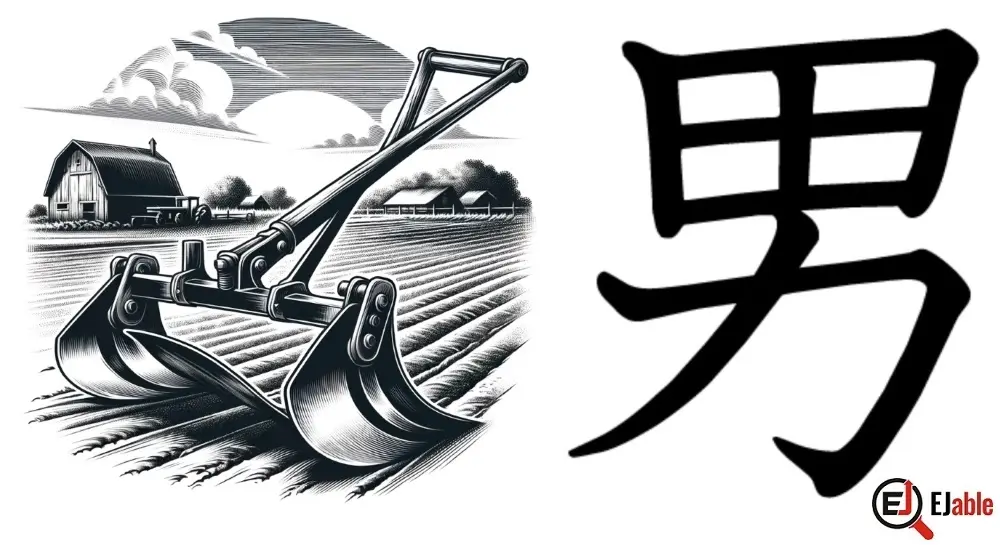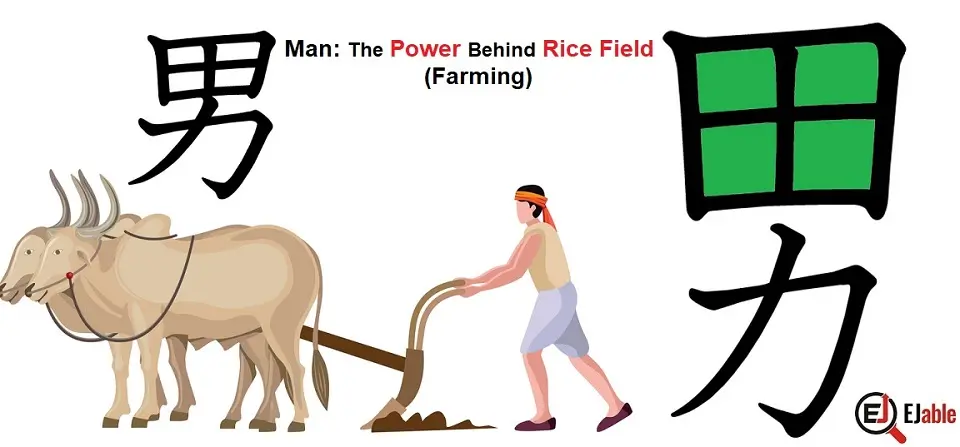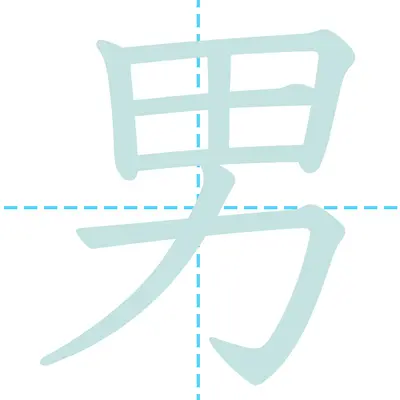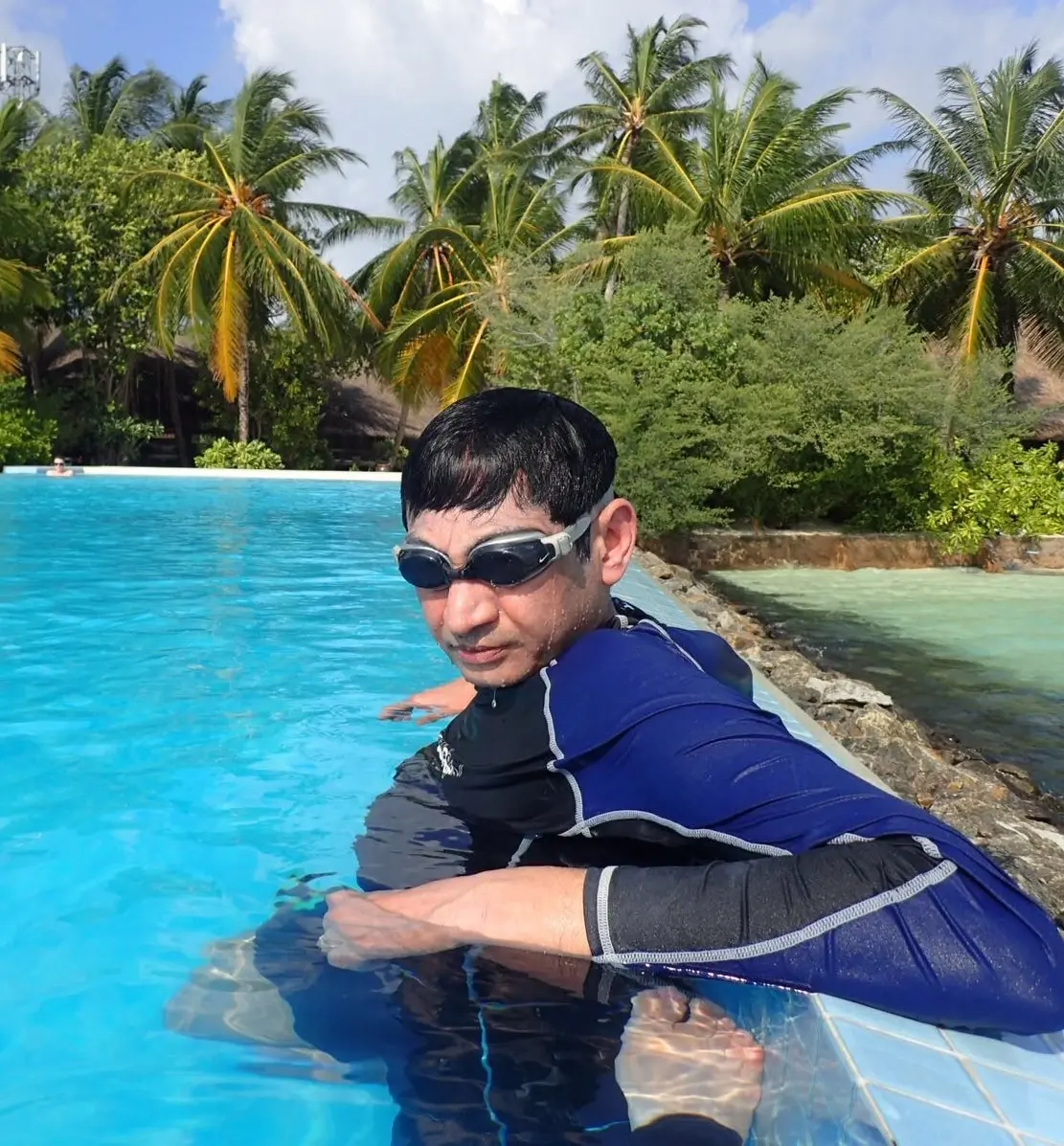Kanji for Man: 男 (Otoko)

The Japanese kanji for Man is 男. The Kunyomi or the Japanese pronunciation of the Kanji 男 is otoko (おとこ)., and the Onyomi (Chinese) pronunciation is dan (ダン) or nan (ナン).
Man’s Kanji is constructed with 7 strokes. This Kanji is a part of the JLPT N5 syllabus (please check the list of JLPT N5 Kanji). In Japanese schools, this Kanji is taught in grade 1.
Apart from being a standalone Kanji, the Kanji 男 is used as a part of many complex Japanese terms related to man.
Let’s check its origin and how to remember this Kanji easily.
Origin of the Man’s Kanji 男
The kanji for man, 男, comprises two parts: 田 (rice field) and 力 (Power or strength). This is one Kanji that clearly reflects its origin, the thought process, and the story behind it. Even after centuries of simplification, the Kanji for Otoko still contains its original visual representation, making it one of the easiest Japanese Kanji characters to remember.
Mnemonic: How to Remember the Kanji 男 (Otoko)

Once humans started agriculture and their lifestyle changed from wandering from place to place as hunter-gatherers to permanent settlements in one place depending more on farming, agriculture became the primary occupation to support life.
As for all other activities in those times, farming was manual work. Therefore, mainly men were involved in the fieldwork on farms. In Japan, farming has been mainly represented by rice farming. In fact, that is the case even today; about 85% of the 2.3 million farms in Japan plant rice yearly.
Considering the above facts, it was natural to consider “men” as the “power” behind rice fields or agriculture. The Kanji very beautifully represent this fact for a Man, which consists of the following Kanji characters:
In other words, we can also say that these components suggest the image of a strong person working in the fields, which was a common role for men in traditional societies. This combination of “rice field” and “strength” gives us the kanji for “man.”
The above explanation is a simple logic to remember the Kanji for man, i.e., 男 (Otoko).
Stroke Order for the Kanji 男
The following illustrations show the order of the 4 strokes to write the Kanji 男:


Compound Words Using 男
The Kanji for man frequently appears in compounded Japanese words’ kanjis. There are 160 Japanese words that begin with the Kanji 男, and it appears in 230 words. Here are some compounded words using the kanji of “man” (男):
- 男子 (danshi): This means “boy” or “young man.”
- 男性 (dansei): This means “male” or “masculinity.”
- 男性的 (danseiteki): This is an adjective form that means “masculine.”
- 男女 (danjo): This means “men and women” or “both genders.”
- 男優 (dan’yū): This means “male actor.”
- 男女平等 (danjo byōdō): This means “gender equality.”
- 男爵 (danshaku): This means “baron,” a rank of nobility.
- 男心 (otokogokoro): This phrase refers to a “man’s heart” or “man’s feelings.”
- 男前 (otokomae): This term is a casual way to say “handsome man.”
- 中年男性 (chūnen dansei): This term means “middle-aged man.”
- 男らしい (おとこらしい, otokorashii): Masculine; manly.
- 男子学生 (だんしがくせい, danshi gakusei): Male student.
- 男子会 (だんしかい, danshikai): Boys’ night out; men’s gathering.
- 男性化 (だんせいか, danseika): Masculinization.
- 男勝り (おとこまさり, otokomasari): Better than men; a woman who surpasses men in certain skills or traits.
- 男女共学 (だんじょきょうがく, danjo kyōgaku): Coeducation.
- 男性声優 (だんせいせいゆう, dansei seiyū): Male voice actor.
- 男心と秋の空 (おとこごころとあきのそら, otokogokoro to aki no sora): A phrase meaning “men’s hearts and autumn weather are fickle.”
- 男女差別 (だんじょさべつ, danjo sabetsu): Gender discrimination.
- 男子トイレ (だんしトイレ, danshi toire): Men’s restroom.
- 男子禁制 (だんしきんせい, danshi kinsei): Men not allowed; no boys allowed.
- 男性用 (だんせいよう, dansei-yō): For men, men’s use.
- 男性名 (だんせいめい, dansei-mei): Male name.
- 男性服 (だんせいふく, dansei-fuku): Men’s clothing.
- 男女混合 (だんじょこんごう, danjo kongō): Mixed-gender.
These are some examples to give you a sense of how the kanji for man 男 appears in various contexts related to men.
Conclusion: Man’s Kanji 男 in the Japanese Language
The journey through the kanji for male human beings 男 unveils not just a character but a narrative deeply woven into Japan’s cultural and linguistic foundation.
The Kanji for men has historical roots depicting a rice field and strength. It symbolizes the traditional role of men in society and its varied use in modern compounded words.
The Kanji 男 encapsulates the evolving perspectives of masculinity, gender roles, and identity. We gained more than mere linguistic knowledge as we explored how to remember this kanji and its rich applications in phrases and compound terms. We gain insight into the societal values and cultural norms reflected in the Japanese language.
Man’s kanji 男, therefore, stands as a testament to the dynamic interplay between language, Japanese culture, and social evolution, offering a window into the collective consciousness of Japan and its people.
Check other Kanji characters on the page “How to Learn Kanji“.

A long-term ex-pat in Japan, Himanshu comes with an IT background in SAP consulting, IT Business Development, and then running the country operations of an IT consulting multinational. Himanshu is the co-founder and Managing Director of ReachExt K.K. and EJable.com. He is also an Advisory Board Member of a Silicon Valley AI/IoT startup.
